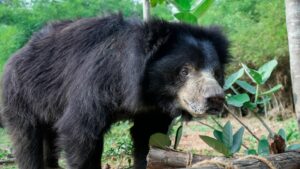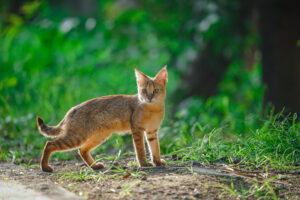India harbours not only its iconic big cats, but also nine small cat species that only a few have ever heard of. Overshadowed in conservation conversations, these elusive felines live quietly in forests, wetlands, grasslands, and even high-altitude plateaus, each adapted to a unique niche. These “small cats” are distinct from their larger cousins like tigers, leopards, and lions not just in stature, but also in biology. Unlike big cats from the Panthera genus that can roar, small cats belong to other genera and typically purr, meow, or hiss instead. Their size generally ranges from that of a domestic cat to a medium-sized dog — far smaller than a leopard or tiger — which is why they are collectively referred to as small wild cats.
As miniature versions of their larger cousins, small cats are skilled hunters, natural pest controllers, and sensitive indicators of ecosystem health. Yet despite their importance, small cats remain poorly studied, frequently misunderstood, and increasingly threatened by habitat loss, conflict, and trade. Conservationists warn that their decline represents a silent crisis unfolding largely out of sight, but with profound consequences for India’s biodiversity.
As both victims and sentinels of environmental change, their survival, or disappearance, mirrors the health of some of the country’s most threatened landscapes. Protecting these lesser-known felines is therefore not just about saving a few rare species, but about safeguarding the ecosystems they inhabit.
1. Jungle Cat (Felis chaus)
Body Length: 60–85 cm
Tail Length: 20–30 cm
Weight: 6–8 kg
IUCN Red List Status: Least Concern
Widespread and resilient, the jungle cat is the most commonly sighted small cat of India, found from wetlands and grasslands to agricultural fields on the fringes of urban areas. It is recognised by its sandy to reddish coat and short tail with black rings. As the largest of India’s small wild cats, the jungle cat averages the size of a domestic cat. These cats skilfully hunt rodents, birds, and reptiles, providing natural pest control for farmers. However, even this adaptable species faces trouble like wetland drainage, persecution near farms, and increasing roadkills. Recent studies show their abundance drops dramatically where wetlands vanish, underlining the need to safeguard India’s prominent yet lesser-known wild spaces.
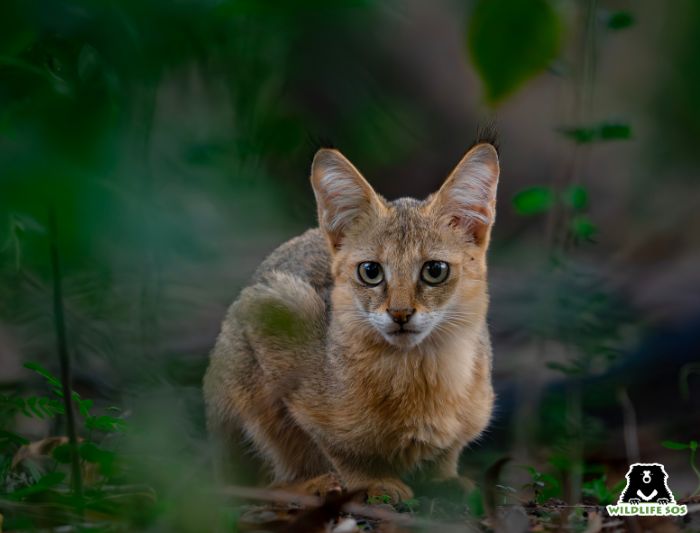
2. Rusty-spotted Cat (Prionailurus rubiginosus)
Body Length: 30–50 cm
Tail Length: 15–30 cm
Weight: 1–2 kg
IUCN Red List Status: Near Threatened
Almost half the size of a domestic cat, the rusty-spotted cat is the world’s smallest (and the most light-weight) wild cat, and is also one of the least studied ones. Its range covers deciduous forests, scrublands, rocky outcrops, and sometimes human habitations. Rusty-spotted cats are solitary, nocturnal hunters feasting on rodents, lizards, frogs, and birds. They have been photographed emerging from mine shafts and even sheltering in thatched roofs. However, ongoing habitat fragmentation, road deaths, and a dearth of systematic research make its future uncertain. What has taken many by surprise is that for the first time ever, three rusty-spotted cats (an adult female and two kittens) were spotted in West Bengal’s Purulia district, indicating that the forest habitat here is healthy enough to give this species needed shelter.
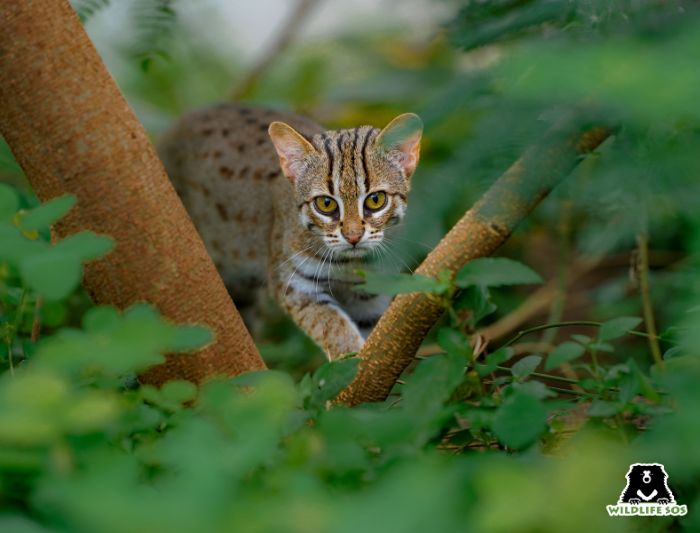
3. Leopard Cat (Prionailurus bengalensis)
Body Length: 45–75 cm
Tail Length: 19.5–31.5 cm
Weight: 3–4 kg
IUCN Red List Status: Least Concern
After the commonly found jungle cat comes the distinctly marked and highly adaptable leopard cat, which is largely found in Himalayan foothills, Northeast forests, the Sundarbans, and Western Ghats. It is roughly the size of a domestic cat but slimmer and longer-legged. It’s equally at home in dense rainforest and in rice paddies. As a nocturnal carnivore, it keeps a check on rodent populations. However, habitat fragmentation, poaching for the pet and skin trade, and mistaken identity of being cubs of feral cats are a constantly rising threat to their lives. Wildlife crime reports also reveal that with the global spotlight on the illegal trade of big cats’ body parts, focus in Northeast India is now shifting towards small wild cats like the leopard cats.
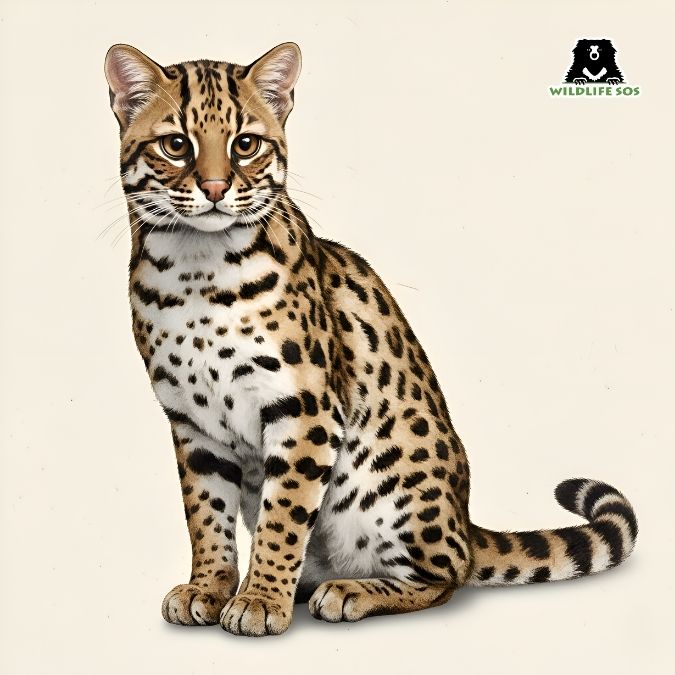
4. Fishing Cat (Prionailurus viverrinus)
Body Length: 57—115 cm
Tail Length: 24–40 cm
Weight: 11–16 kg
IUCN Red List Status: Vulnerable
With partially webbed feet and a muscular body built for swimming, the fishing cat is a true wetland specialist. Found near rivers, swamps, and mangroves — especially in eastern India — it preys on fish, crustaceans, and occasionally birds and small mammals. These cats have stripes of dark spots that seem stretched on their greyish coats. It can reach the weight of 16 kg, making it one of the heaviest among India’s small cats. Vulnerable to extirpation due to rapid wetland loss, conflict with fish farmers, and targeted poaching for its skin, the fishing cat is also threatened by water pollution and waterway disruption. Conservation projects to protect these cats now rely heavily on camera traps for research, awareness and community participation.
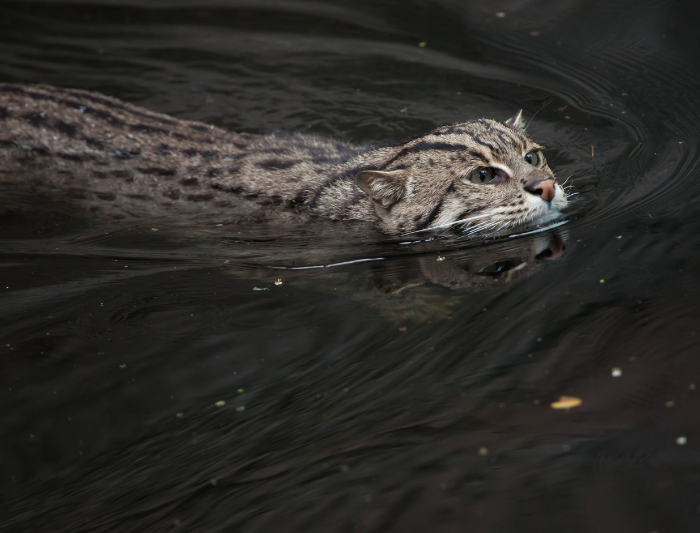
5. Asiatic Wildcat (Felis lybica ornata)
Body Length: 47–60 cm
Tail Length: 30 cm
Weight: 8 kg
IUCN Red List Status: Least Concern
This tough, sandy-furred cat is perfectly suited to the Thar Desert and semi-arid grasslands across western and central India, where it resides within burrows. An Asiatic wildcat has a spotted coat except on its underside. With tufted, insulated foot pads and the ability to withstand long periods without surface water, it preys on gerbils, larks, and other desert wildlife. Unfortunately, it faces the same suite of threats: habitat loss and persecution (often mistaken for poultry thieves). Asiatic wild cats also undergo genetic dilution as it often interbreeds with domestic cats — physically hybridising the pure desert cat’s appearance and its lineage this way.
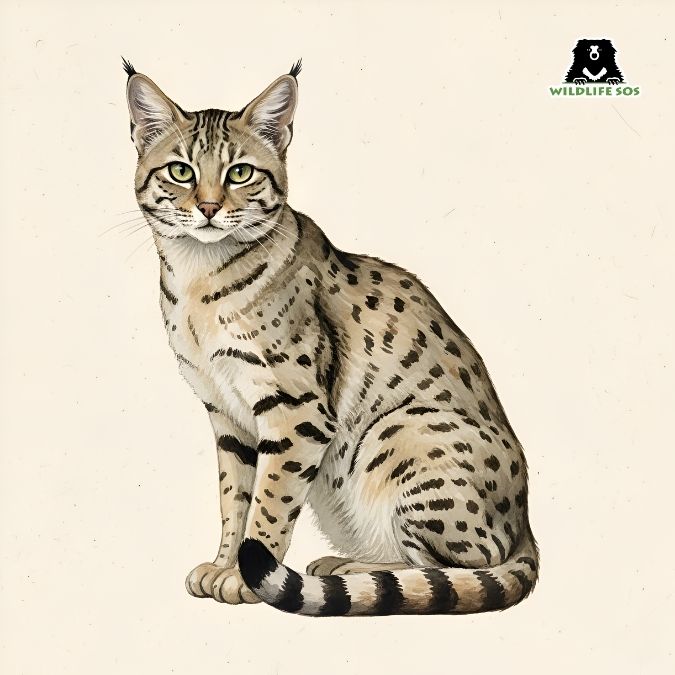
6. Asiatic Golden Cat (Catopuma temminckii)
Body Length: 66–105 cm
Tail Length: 42.5–57.5 cm
Weight: Up to 16 kg for males, and 8.5 kg for females
IUCN Red List Status: Near Threatened
Asiatic golden cats are among the larger small cats that can grow to twice the size of a domestic cat. Once considered almost mythical in India, recent camera trap surveys in Assam and Arunachal Pradesh have finally confirmed the presence of these cats in their forests. Its coat varies from deep maroon to golden and even melanistic forms. Mostly nocturnal and highly secretive, they hunt rodents, birds, and even small deer. Ongoing deforestation and poaching remain critical threats for these wild cats, even in protected reserves. Moreover, the lack of baseline data on its population is another crucial factor that delays attempts to conserve this species.
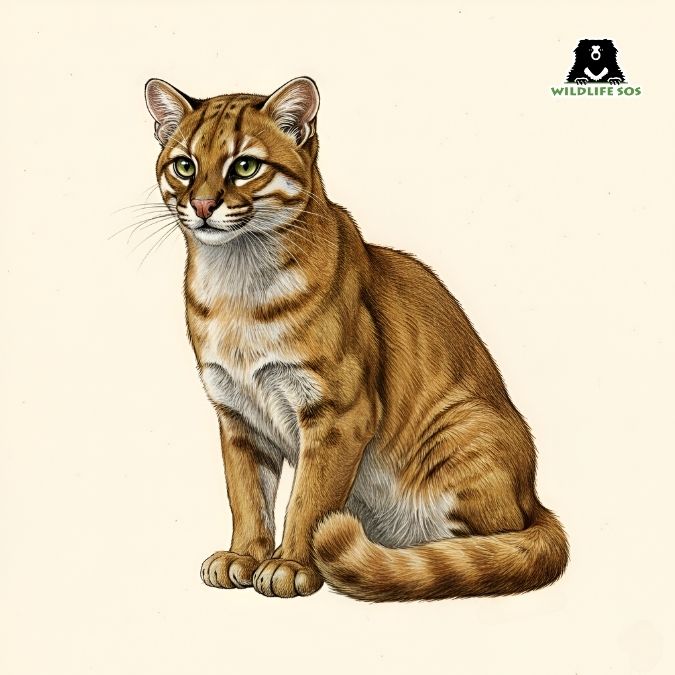
7. Marbled Cat (Pardofelis marmorata)
Body Length: 45–62 cm
Tail Length: 35.6 cm–55 cm
Weight: 2–5 kg
IUCN Red List Status: Near Threatened
One of the least observed Indian felines, the marbled cat primarily dwells high on rainforest trees and in remote hilly tracts of Northeast India. In fact, only in recent times have camera traps captured the first-ever conclusive images of the marbled cat from Assam’s forest reserve, confirming its presence in the state. With tails almost as long as their body, and varying sizes of spots on its greyish fur, the marbled cat bears striking resemblance to the much larger clouded leopard, a wild cat. These small cats take advantage of their pattern to blend in well among the leaves and branches to catch hold of arboreal and avian prey. Marbled cat populations are especially sensitive to widespread logging and forest fragmentation.
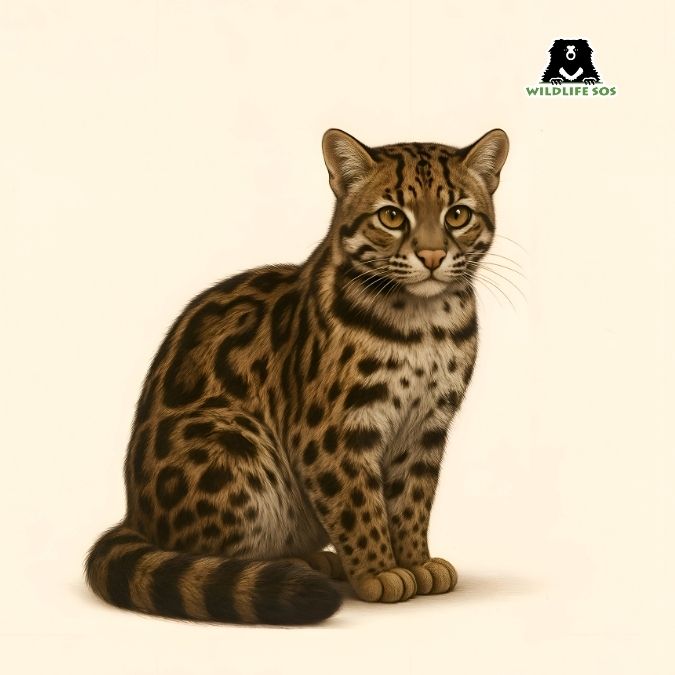
8. Caracal (Caracal caracal)
Body Length: 60–105 cm
Tail Length: 19.5–34 cm
Weight: 8–20 kg
IUCN Red List Status: Least Concern
With large ears elongated with tufts and a brick red coat, the caracal is a specialist predator of open scrub and arid landscapes. Slim and tall, it is sturdier than most small cats. With its weighing 8–20 kg, caracals can become the heaviest among all small wild cat species in India. While it used to be common across North and Central India, caracals are now one of the country’s rarest cats — with reports suggesting their population having reduced to fewer than fifty individuals in India. Its main threats are prey depletion, persecution as a livestock threat, and shrinking habitat patches, highlighting urgent calls for its conservation.
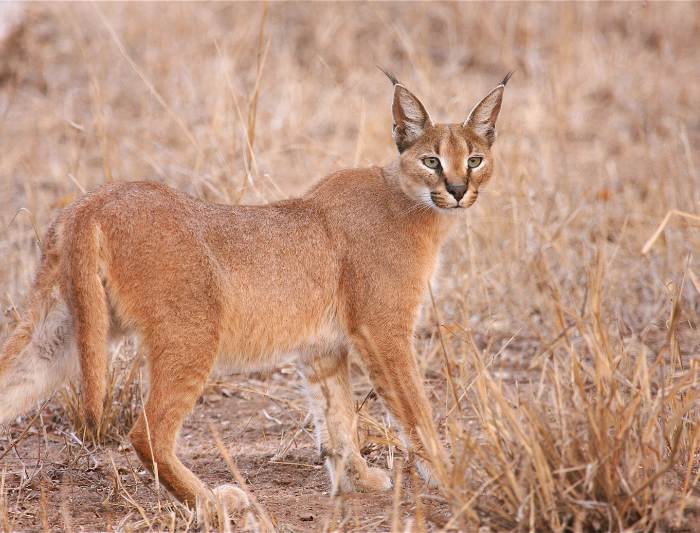
9. Pallas’s Cat (Otocolobus manul)
Body Length: 45–65 cm
Tail Length: 20.5–31 cm
Weight: 2.5–4.5 kg
IUCN Red List Status: Least Concern
Restricted to the cold, rocky plateaus of Ladakh, the Pallas’s cat (or manul as referred to in Russia and Germany) has a stocky frame and long, dense fur that makes it look larger than it actually is. The thick fur and low-set ears help it to withstand the region’s harsh climate. This small wild cat species survives on pikas and rodents, yet habitat fragmentation, competition with feral dogs, and lack of research make its present and future highly uncertain.
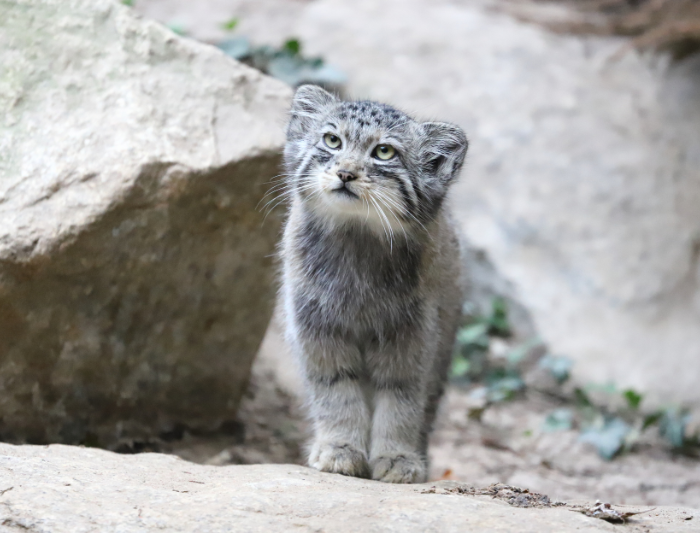
A Pallas’s cat is almost the size of a domestic cat, and is now common to Ladakh’s Hemis National Park and its surrounding elevated regions. [Photo © Canva]
The Many Threats Facing Small Cats
While they may be small in size, wild cats in India face colossal challenges that need to be considered in order to protect some of the overlooked species in wildlife.
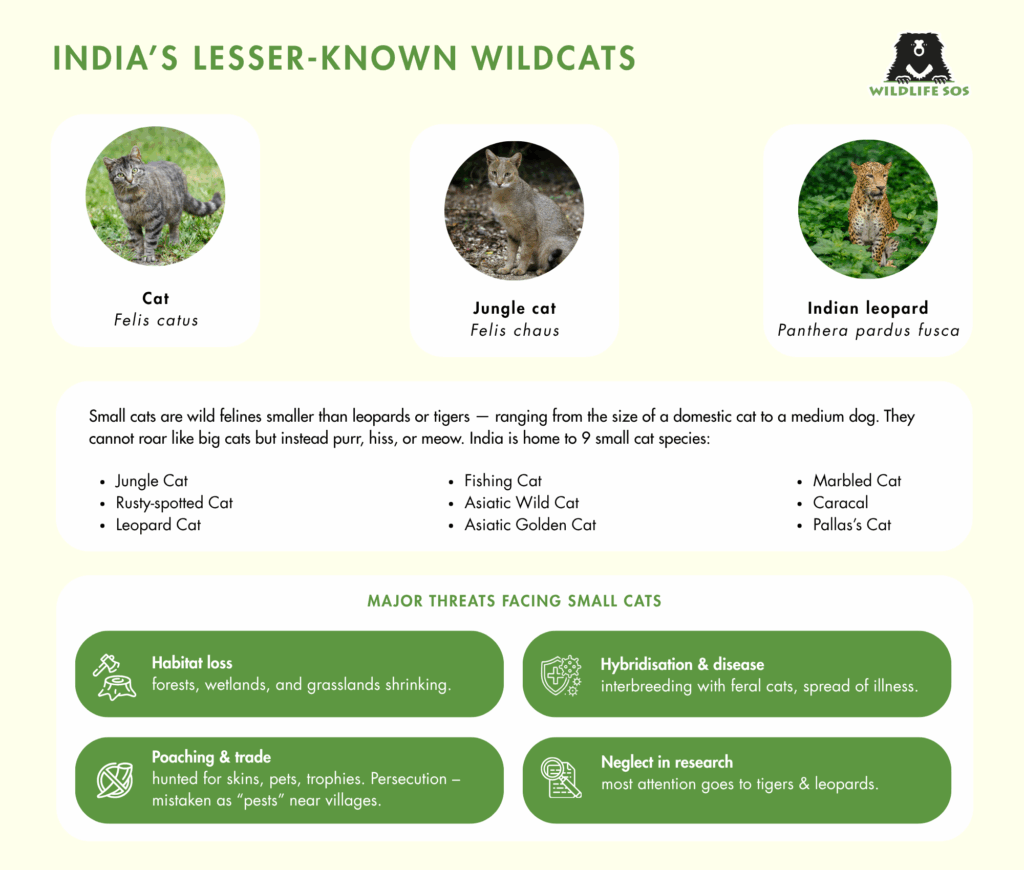
Why India’s Small Cats Need Our Attention
The fate of small wild cats is deeply entwined with India’s landscapes. As both carnivores and prey, they maintain complex food webs, help control pest species, and serve as natural early warning systems for environmental change. Small wild cats function as early warning systems because changes in their occupancy and activity closely track habitat quality, prey availability, and human disturbance — so their decline or local disappearances can be taken as early signals of ecosystem degradation. Conservation measures for small cats benefit not just forests and wetlands, but also water security and the millions who depend on healthy ecosystems. Their protection is therefore a matter of ecological justice — recognising the intrinsic worth of smaller species that are often overlooked in the shadow of big cats and other megafauna. Championing the conservation of small wild cats is one of the most effective ways to preserve India’s web of life.
Small wild cats such as rusty-spotted cats and jungle cats have been rescued by Wildlife SOS from wells, urban areas, and human-wildlife conflict sites. Relatively rare to spot in the wild, when these felines come into contact with people, they are often mistaken as being cubs of leopards or other big cats. Much like leopards in Maharashtra, mothers of rusty-spotted kittens tend to secure their kittens under the shade of sugarcane stalks, and are often found all by themselves by the local people. And just as we do for leopard cubs, Wildlife SOS along with the state forest department have successfully reunited as many as 26 rusty-spotted kittens with their mothers, ensuring they received crucial maternal care and guidance in the wild.
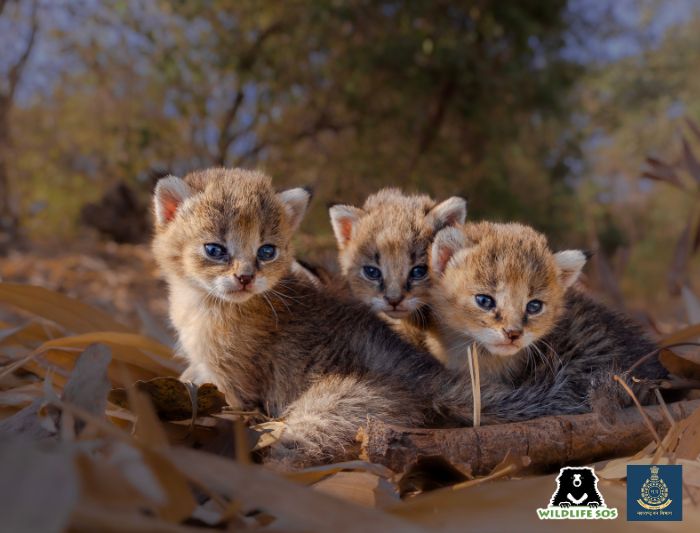
Each rescue therefore becomes crucial: it not only saves an individual animal but also supports its population health, facilitates research, and fosters public awareness about their identity and plight. It also enables these wild cats to be medically examined and returned to the wild, where they can continue their essential ecological roles.
If you find wildlife, including a distressed cat resembling any of the wild cats mentioned above, contact our 24×7 rescue helplines. This is a sure way to ensure professional intervention, thereby making a real difference in conservation and coexistence.
Wildlife SOS Rescue Helplines:
- Delhi NCR: +91-9871963535
- Agra & Mathura, Uttar Pradesh: +91-9917109666
- Vadodara, Gujarat: +91-9825011117
- Jammu & Kashmir: +91-7006692300, +91-9419778280
By supporting Wildlife SOS, you help ensure that India’s lesser-known wild cats continue to thrive in the habitats they call home. Every contribution strengthens our ongoing work to protect, rescue, and care for the country’s wildlife — donate to make a difference.
Feature Image: Akash Dolas/ Wildlife SOS
Morphometric data of India’s small cats have been sourced from Indian Mammals: A Field Guide (New Edition, 2023)


